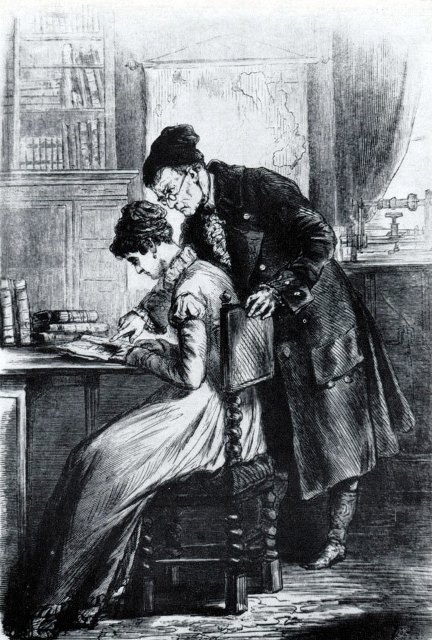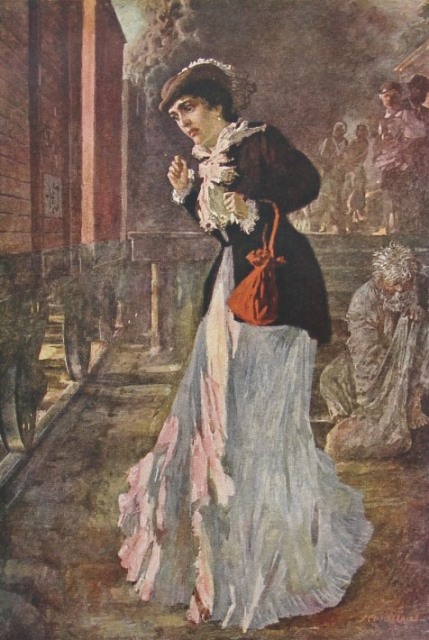
10.12.2022
During his service, Leo Tolstoy had quite a lot of free time. During this period he wrote his autobiographical novel Childhood, in which he masterfully described his memories of the early years of his life. This work was an important event in the compilation of his biography.
As soon as Childhood was published in the Sovremennik magazine, Tolstoy immediately gained popularity as a writer. The story gained such notoriety that Tolstoy was instantly elevated to the same level as such literary figures of the time as Turgenev, Ostrovsky and Goncharov.
Leo Tolstoy then wrote his next novel, The Cossacks, which describes his life in the army in the Caucasus. This work was in progress until 1862, and was not completed until after he had served in the army.
An interesting fact is that Tolstoy did not stop his writing even during his participation in the Crimean War. During this period, from his pen comes the story “adolescence”, which is a sequel to “Childhood”, as well as “Sevastopol Stories”.
After the Crimean War, Tolstoy leaves the service. When he arrives home, he already has a great fame in the literary arena. His prominent contemporaries talk about a major acquisition for the Russian literature in the person of Tolstoy.
As a young man, Tolstoy was arrogant and stubborn, as can be seen in his diary entries. He refused to belong to a particular school of thought and once publicly described himself as an anarchist, after which he decided to go to France in 1857.
He soon developed an interest in gambling. But it did not last long. When he lost all his savings he had to return home from Europe.
Tolstoy’s works
Tolstoy is one of the most prolific writers. His works are wide-ranging not only in scope but also in the meanings he touches upon in them.
Tolstoy’s most popular works are War and Peace, Anna Karenina and Resurrection.
“War and Peace”
In the 1860s Leo Tolstoy and his family live in Yasnaya Polyana. It was here that his most famous novel War and Peace was published. The original part of the novel was printed in the “Russian Gazette” under the title “1805”. Three years later three more chapters appeared, bringing the novel to a complete conclusion. It was destined to become the most outstanding creative result in Tolstoy’s biography.



Critics and the public alike debated War and Peace for a long time. The subject of their debate was the Napoleonic Wars described in the book. The elaborate, yet fictional characters were also hotly debated.
The novel also became interesting because it featured 3 insightful satirical essays on the laws of history. Among all other ideas, Leo Tolstoy tried to convey to the reader that man’s position in society and the meaning of his life, are derived from his daily activities.
“Anna Karenina”
After writing War and Peace, Tolstoy began work on his second, equally famous novel, Anna Karenina. To it the writer contributed many autobiographical sketches. This can easily be traced by looking at the relationship between Kitty and Levin, the main characters in Anna Karenina.



The work was printed in parts between 1873-1877 and was very highly regarded by critics and the public alike. Many have remarked that Anna Karenina is practically Tolstoy’s autobiography, written in the third person. For his next work, Leo Tolstoy received fabulous royalties at the time.
“Resurrection”
In the late 1880s Tolstoy wrote the novel Resurrection. Its plot was based on a genuine court case. It was in “Resurrection” that the author’s harsh views on church ceremonies were clearly outlined. By the way, this work was one of the reasons for the complete break between the Orthodox Church and Count Tolstoy.



Religion
Although the above works were a resounding success, the writer was not happy about it. He was in a depressive state and experienced a deep inner emptiness. Consequently, the next stage in Tolstoy’s biography was a continuous, almost convulsive search for the meaning of life.
Initially Lev Nikolaevich looked for answers in the Orthodox Church, but it did not bring him any results. Over time he began to criticise both the Orthodox Church itself and the Christian religion in general. He began to publish his thoughts on these sensitive issues in the publication The Mediator. His main position was that Christian doctrine is good, but that Jesus Christ Himself is as if not needed. That is why he decided to make his own translation of the Gospel. In general, Tolstoy’s religious views were extremely complex and confusing. It was some incredible mixture of Christianity and Buddhism, seasoned with various Eastern beliefs. In 1901, the ruling of the Holy Governing Synod on Count Leo Tolstoy was issued. This was a ruling which officially notified that Leo Tolstoy was no longer a member of the Orthodox Church, as his publicly expressed beliefs were incompatible with such membership. The determination of the Holy Synod is sometimes mistakenly interpreted as an excommunication (anathema) of Tolstoy.




